13
MAY, 2022
July 2020
Covid hard lockdown eased, and we headed off to Vukani. Two bridges cross the tributary that runs from two springs at the head of the valley, down the grassy slopes to join the Bloukrans River on its way to Port Alfred. The lower bridge is too fouled with sewage to work in, so we aimed for the upper bridge.
Drought and overgrazing has eroded the soil, which filled the riverbed and blocked the bridge completely, so … it had become a dumping ground. In the picture below, the white mass at the end of the bridge parapet is a discarded sofa! One of the reasons why using plastic bags is pointless for this kind of clean-up.
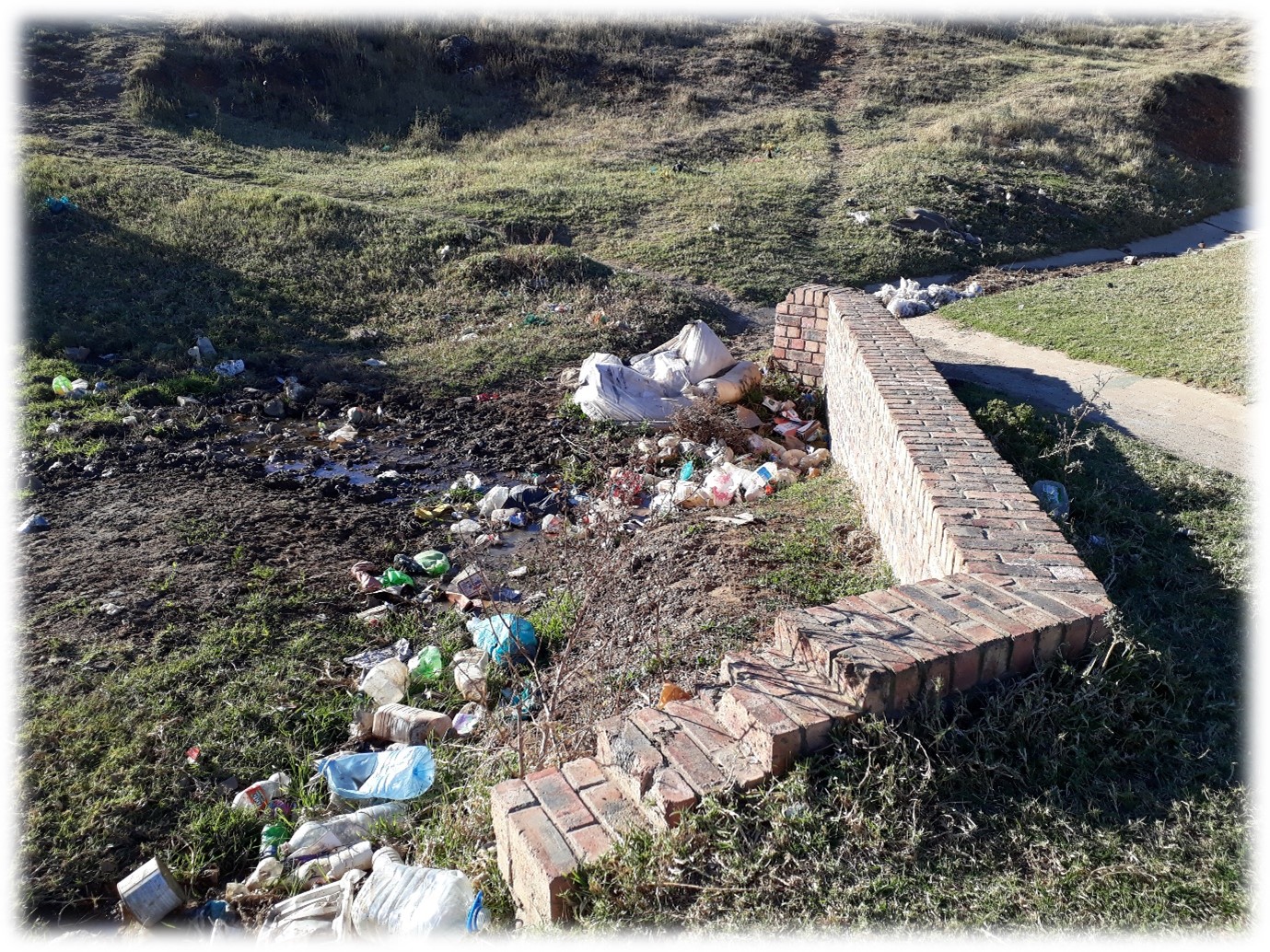
Upper bridge at Vukani – silted up and blocked with rubbish
The first time we went to Vukani, the children simply arrived, ready to help. The rule was: If you’ve got a facemask, we’ll give you gloves. They set to with a will, and we filled a skip in under two hours.
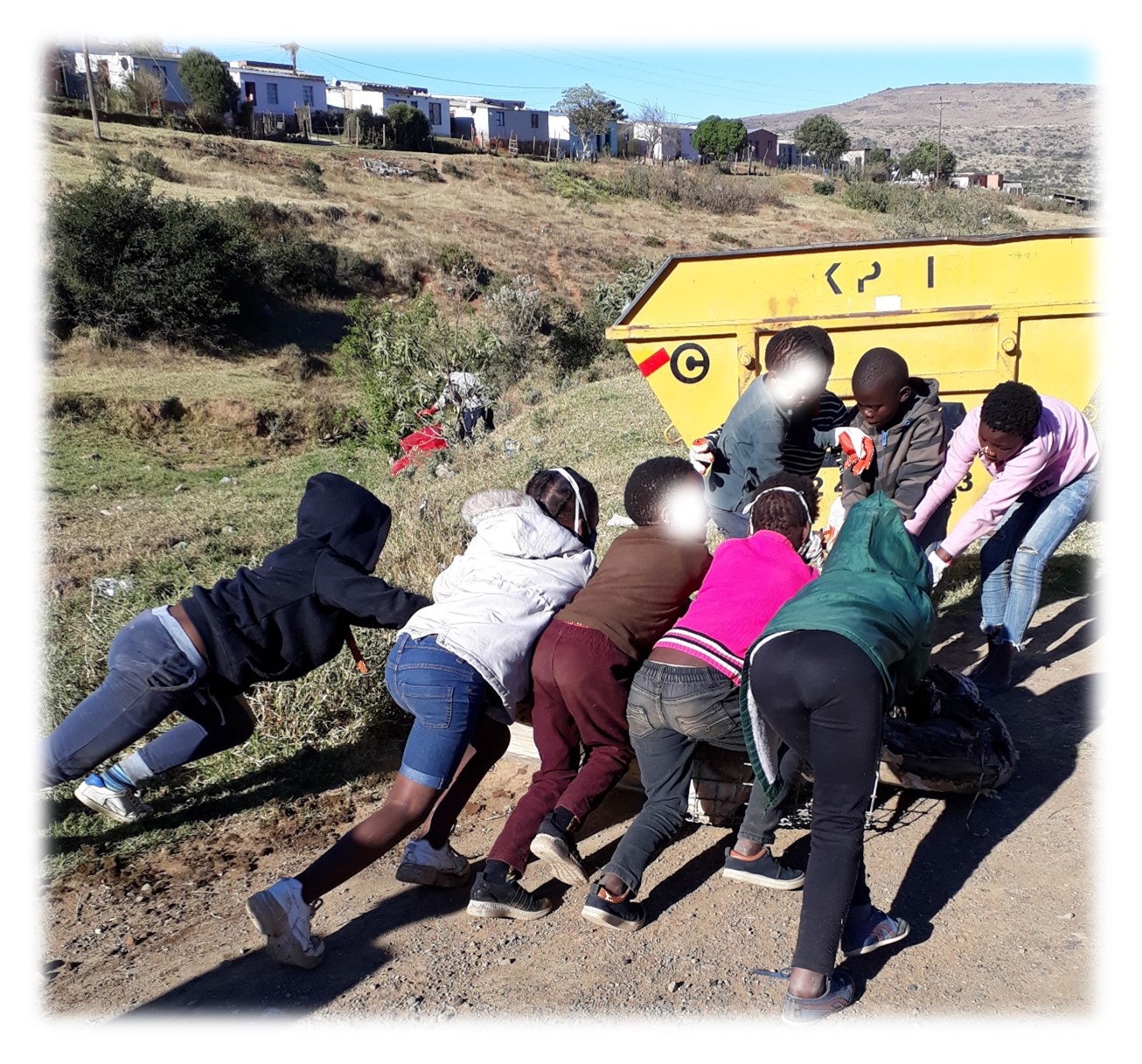
Lots of energy, laughter and determination achieved the impossible – moved the sofa to the skip!
They came so regularly that we started a ‘pop-up’ school led by Jess Cockburn and Preven Chetty. When the skip was full, the children returned the gloves, washed their hands, made a socially distanced circle and told us what they know about rivers, and we told them what we know. A similar pop-up school developed in Evans Street, too.
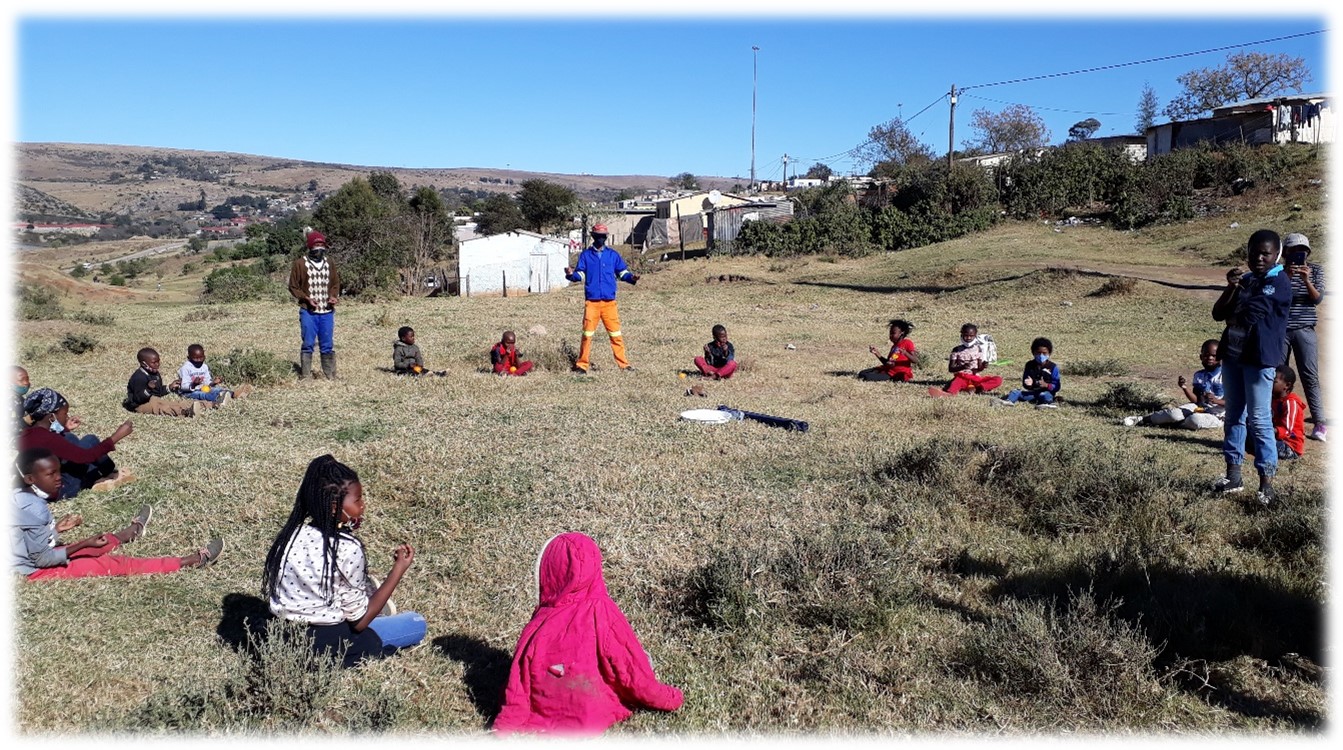
Pop-up school at Vukani
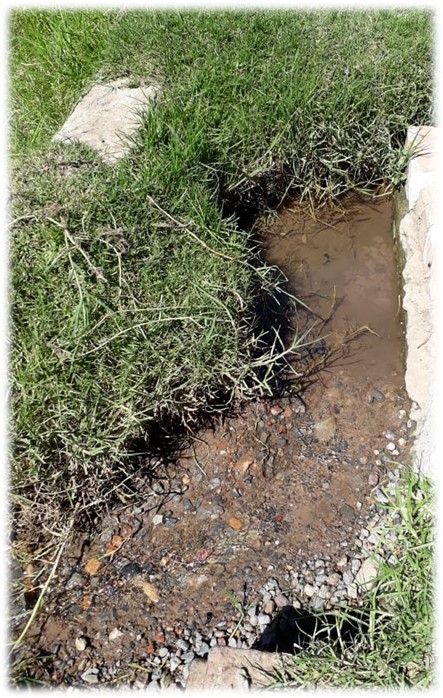
The spring at Evans Street – small and vulnerable
For the rest of 2020, we concentrated our efforts in Vukani and Evans Street. Preven led the children downstream to the confluence with the Bloukrans/Mrwetyana; a group of interested adults from Port Elizabeth and Grahamstown walked upriver to look for the source and assess the kinds of problems: alien vegetation clogging the watercourse, overgrazing leading to erosion and silting, rubbish dumping, and the inevitable sewage …
The bridge at Evans Street was largely clear, thanks to Elizabeth’s vigilance and the help of people who live near it. And near to it I was shown a spring of clear water that gently bubbles up and from which people can get a little clean water. Once, not so long ago, all the Makhanda rivers were like that!
2021
In spite of Covid, we’ve been able to share the River Rescue exploits by giving presentations to the Makhanda Residents’ Association, to learners at PJ Olivier, to teachers and the Environmental Club at Kingswood, and to involve Jess Cockburn’s Honours students from the Department from Environmental Science, and Community Engagement at Rhodes.
There’s a LOT of work to do: the valley that leads up to Sun City through Ghost Town is horrific: steep and inaccessible, but at the top there’s a small spring of clear water. This is the second small spring that I’ve been shown since we started working in this catchment.
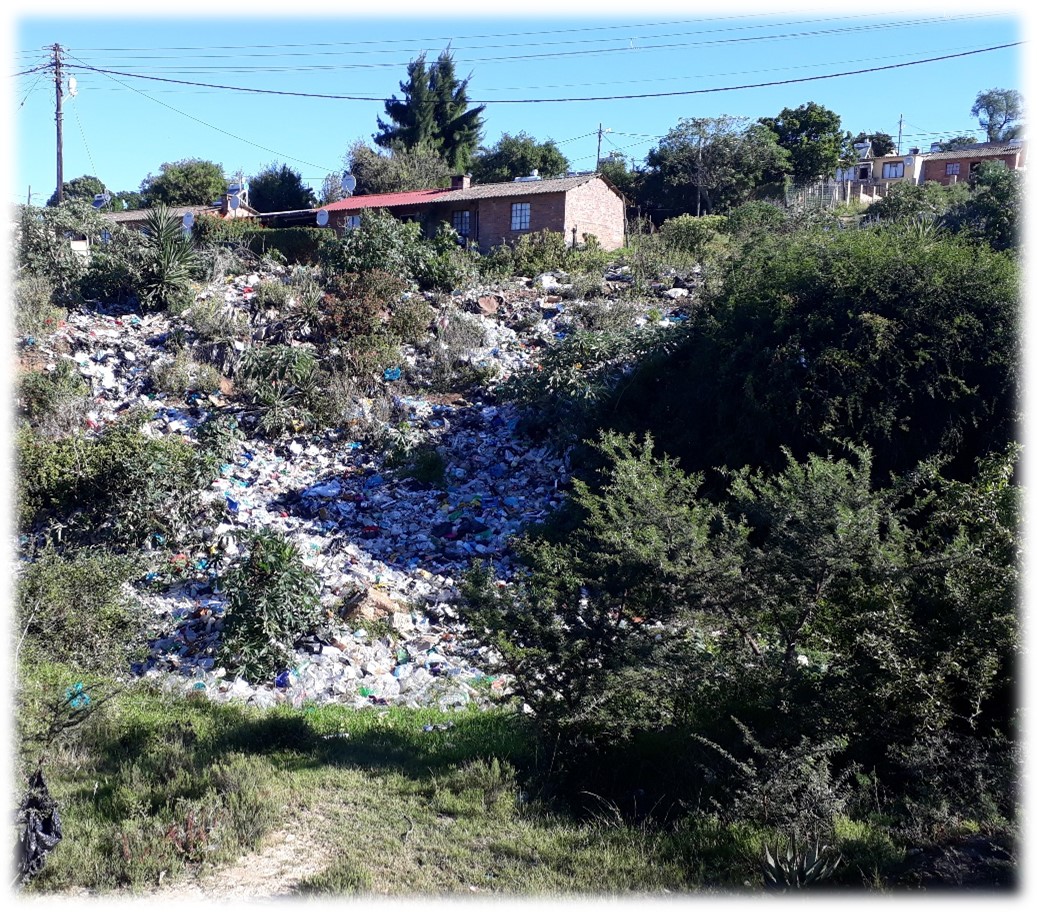
Ghost Town – steep and difficult to clean
We’ve also walked up to the top just below Extension 10 where there is a wetland that feeds into the tributary that we’ve been working on. The view from the top is breathtaking – but one doesn’t want to breathe too deeply because a sewage pipe leaks into the wetland.
In a sense, we’ve been working ‘backwards’, moving upstream from Jarvis Street, making contact with the folk who live on either side of the river as we go, simply working there, answering their questions, stimulating interest and hope.
Evans Street was beginning to look like a park, and when people asked, “How did you do that?” our response has been to go to where they are and start doing the same thing, finding a local champion if we can and working together to restore the river to health. Wherever we work, the children come – unasked and enthusiastic – to help. Their energy is astonishing and their delight infectious.
It’s a way of opening up the community to our efforts, and of teaching the children about the rivers on which the lives of everyone and everything depend.

Recent Comments